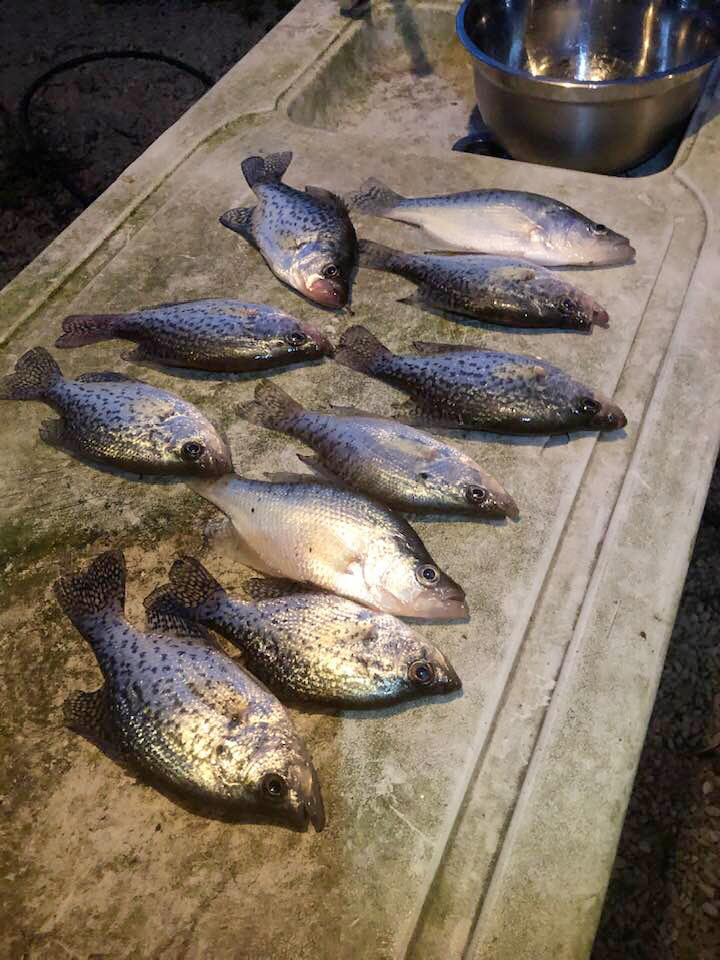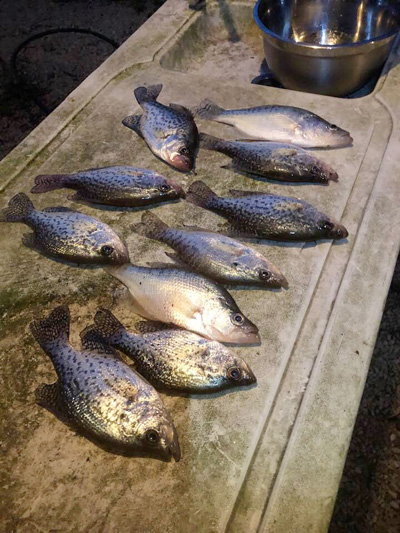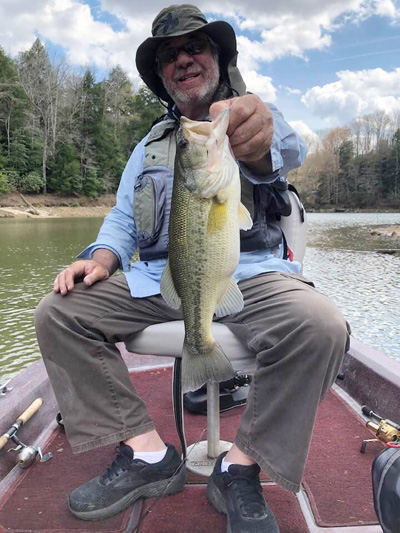
BY Chris Erwin
While bass fishing is what we hear so much about it is not the fish that ends up on the kitchen table. In my opinion, the fish that tops the list for me to eat is crappie. They are mild tasting with very little blood in the tissue. Their pearly white meat, when filleted, and skinned is just about as good as it gets for freshwater fishing. So it’s no wonder its called the most popular eating fish in America.

Young and old, fishing from a boat or the bank, you can catch these fish. We are fast approaching the most productive period of the year. Crappie begins to get active when the water hits 50 degrees. However, there are hundreds of reports of crappie catches as soon as lakes lose their winter ice.
All of our local lakes are passed the 50 degrees mark, and some are creeping into the low 60 dreg range. As the temperature goes up, the crappie starts moving toward shallow water. Their spawn is triggered by these temperatures, and while peak spawning occurs about 68 to 70, they begin the pre-spawn movements around 60 degrees.
What should you look for to cash in on the early season bonanza? The place to start is the creeks, and if you can find brush piles or flooded multi-flower bushes spend the time to check them out. Another place to look is wind protect cuts. These are not full-blown coves but often hold some structure like logs, stumps or brush that is prime bedding sites. While coves often hold bedding sites, they also get the most pressure and if you can find areas that are less used you may find larger fish.
While both white and black crappie come to shallow water during the spawning period. The black crappie tends to stay in the shallow water longer, White crappie will migrate to channel areas once the spawn is over.

I was talking to Gary Green, a local outdoorsman and former Wildlife Commissioner, he told me “the crappie are already moving in areas that are easy to catch.”He also said, “Talked to the people at Minor Clark Hatchery today about crappie in Grayson. They informed me that it was polluted with crappie and that’s why the amounts of fish are high, and the lengths are small. They said we need to encourage people to take smaller fish to reduce the numbers which would allow the fish to grow larger. They tested 4-year-old fish that were under 10 inches.”
My favorite rig is to use a 12foot light-action rod with an ultra light spinning reel. Live bait is very popular (minnows). However, I hardly ever use live bait. I like to use 1/32 to 1/8 oz jigs, and 1 ½ inch twister tails tipped with crappie nibbles. I know some of you don’t have any idea what crappie nibbles are so let me tell you. They are made by Berkley Power Bait you can get them at any store that sells tackle. Crappie nibbles come in a little jar like pork-rines, they are little marshmallow looking things only much smaller, they are Chartreuse in color. When you use them, you just thread a couple on your jig hook after you install your twister-tail. I found that when they want the nibbles, you don’t even want to move your bait in the water. This is a smell driven bite so moving the bait doesn’t help.
The other thing to remember is crappie like to congregate in numbers so once you find them is best to stay in that place until you are sure there isn’t more ready to take your bait. The daily bag limit in Kentucky is 20. However, you need to check the waters you are fishing; they are special regulations for some lakes. I would also like to say this is a great time to take a kid fishing. The fast action and light tackle can hook a kid for life, and there is a better thing for a kid to be hooked on than the outdoors and fishing.


Be the first to comment